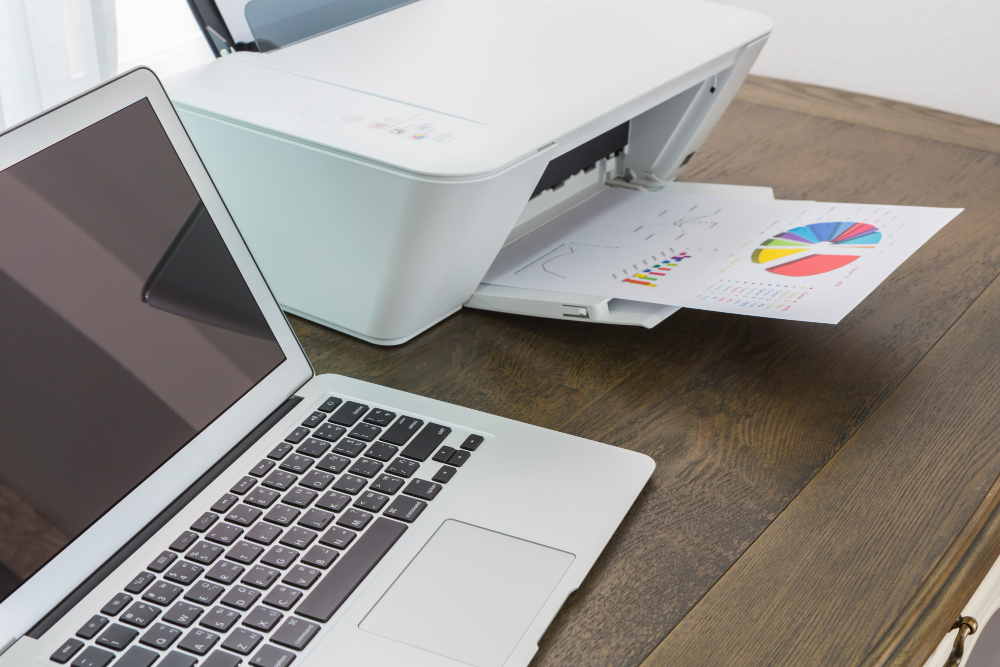Introduction
HP printer installation problems can turn what should be a simple setup process into hours of frustration. Whether you’re setting up a brand-new HP printer or trying to reinstall an existing one, installation issues are surprisingly common and can stem from various sources including driver conflicts, connectivity problems, or compatibility issues.
Modern HP printers offer multiple connection methods—USB, Wi-Fi, Ethernet, and Bluetooth—but each comes with its own potential pitfalls. From the HP Smart app failing to detect your printer to Windows refusing to recognize your device, these installation challenges can prevent you from completing essential printing tasks.
The good news is that most HP printer setup issues follow predictable patterns and can be resolved with systematic troubleshooting. This comprehensive guide will walk you through the most effective solutions, helping you identify the root cause and get your HP printer working properly.
What Are HP Printer Installation Problems?
HP printer installation problems encompass any issues that prevent successful setup and configuration of HP printers on computers or mobile devices. These problems can occur during initial installation, driver updates, or when reconnecting previously working printers.
Common symptoms include the HP Smart app not detecting your printer, installation wizards freezing or crashing, “printer not found” error messages, driver installation failures, and connectivity timeouts during wireless setup. These issues can affect all HP printer series, from basic inkjet models to professional LaserJet printers.
Installation problems typically fall into several categories: software-related issues (corrupted drivers, incompatible software versions), hardware connectivity problems (USB port failures, Wi-Fi signal issues), system conflicts (antivirus interference, Windows permissions), and network configuration errors (firewall blocking, incorrect IP settings).
Understanding the specific type of problem you’re experiencing helps determine the most effective troubleshooting approach. Some issues require simple restarts, while others may need complete driver reinstallation or network reconfiguration.
The complexity of modern printer installation stems from the integration between hardware, operating systems, and HP’s proprietary software ecosystem, creating multiple points where problems can occur.

7 Proven Methods to Solve HP Printer Installation Problems
Method 1: Use HP Print and Scan Doctor
HP’s official diagnostic tool automatically detects and fixes common installation issues:
Step 1: Download HP Print and Scan Doctor from HP’s official website Step 2: Run the tool as Administrator Step 3: Select “Start” and choose your HP printer from the detected list Step 4: Follow the automated diagnostic process Step 5: Apply recommended fixes automatically or manually as prompted Step 6: Restart your computer and test printer functionality
Method 2: Complete Driver Reinstallation
Fresh driver installation often resolves persistent hp printer driver installation problems:
Step 1: Uninstall existing HP printer software through Control Panel > Programs Step 2: Delete any remaining HP printer entries in Device Manager Step 3: Restart your computer to clear system cache Step 4: Visit HP Support website and download latest drivers for your exact printer model Step 5: Disconnect printer from power and USB/network Step 6: Run downloaded driver installer as Administrator Step 7: Connect printer only when installation wizard prompts you
Method 3: Reset Network Settings for Wireless Printers
Network configuration issues frequently cause wireless installation failures:
Step 1: Press and hold the Wireless and Cancel buttons simultaneously for 3 seconds Step 2: Wait for wireless light to flash, indicating network reset completion Step 3: Print network configuration page to verify reset Step 4: Use HP Smart app or WPS button to reconnect to Wi-Fi Step 5: Ensure printer and computer are on the same network Step 6: Restart router if connection issues persist
Method 4: Disable Windows Firewall and Antivirus Temporarily
Security software can block printer installation processes:
Step 1: Temporarily disable Windows Defender Firewall Step 2: Exit or disable third-party antivirus software Step 3: Attempt printer installation while security software is disabled Step 4: Re-enable all security software immediately after successful installation Step 5: Add HP printer software to firewall exceptions if needed

Method 5: Use Windows Built-in Printer Installation
Windows native installation bypasses HP software complications:
Step 1: Open Settings > Devices > Printers & scanners Step 2: Click “Add a printer or scanner” Step 3: Wait for Windows to detect your HP printer Step 4: Select your printer from the list and click “Add device” Step 5: Download drivers automatically through Windows Update Step 6: Test basic printing functionality
Method 6: Check USB Port and Cable Issues
Physical connection problems often masquerade as software issues:
Step 1: Try different USB ports, preferably USB 2.0 ports Step 2: Test with a different USB cable (use cables shorter than 10 feet) Step 3: Connect printer directly to computer, avoiding USB hubs Step 4: Ensure USB ports are functioning by testing other devices Step 5: Update USB controllers through Device Manager if necessary
Method 7: Perform HP Printer Factory Reset
Complete hardware reset eliminates configuration conflicts:
Step 1: Power off the printer completely Step 2: Hold down the Power button while connecting power cable Step 3: Continue holding Power button for 10-15 seconds after startup Step 4: Release button and wait for printer to complete initialization Step 5: Reconfigure network settings and attempt installation

Additional HP Installation Tools and Resources
HP provides several specialized tools beyond the standard installation software. The HP Universal Print Driver works with multiple HP printer models when specific drivers aren’t available, making it invaluable for older or discontinued models.
HP Smart Tank, HP LaserJet, and HP OfficeJet series each have dedicated setup utilities designed for specific printer families. These tools often provide better compatibility than generic installation methods.
The HP Support Assistant automatically monitors your HP devices and can proactively identify installation problems before they become critical. It also provides automatic driver updates and system optimization recommendations.
For enterprise environments, HP Web Jetadmin offers centralized printer management and can resolve installation issues across multiple devices simultaneously. Network administrators often find this tool essential for managing large HP printer deployments.
Mobile users should consider the HP Smart app, which provides simplified installation for smartphones and tablets, often succeeding where traditional desktop installation methods fail.
Common HP Printer Installation Mistakes to Avoid
Mistake 1: Installing HP software before connecting the printer Many users install HP software first, but most HP printers require connection during the installation process for proper detection and configuration.
Mistake 2: Using outdated installation media CD/DVD installation discs often contain outdated drivers that cause compatibility problems. Always download current software from HP’s website.
Mistake 3: Ignoring network security settings WPA3 encryption, MAC address filtering, and guest network isolation can prevent successful wireless printer installation.
Mistake 4: Installing multiple HP software packages Installing HP Smart, HP Solution Center, and other HP utilities simultaneously can create conflicts. Use only one primary HP software package.
Mistake 5: Rushing through network setup Wireless installation requires patience. Interrupting the process or clicking “Next” too quickly often causes incomplete configuration.
Mistake 6: Not checking printer compatibility Older HP printers may not support newer operating systems, and newer printers might not work with legacy Windows versions.
Always verify your printer model supports your current operating system before beginning installation. Create a system restore point before installing HP software, and keep your router firmware updated to ensure optimal wireless connectivity.
Frequently Asked Questions
Q: Why won’t my HP printer install on Windows 11? A: Windows 11 compatibility issues are common with older HP printers. Download Windows 11-compatible drivers from HP Support, or use Windows’ built-in printer installation which often provides better compatibility than HP’s proprietary software.
Q: What should I do if HP Smart app won’t detect my printer? A: Ensure both printer and device are on the same Wi-Fi network, restart the HP Smart app, check that printer’s wireless is enabled, and try connecting via USB first to establish initial communication before switching to wireless.
Q: How do I fix “HP printer won’t install” errors on Mac? A: Reset printing system in System Preferences, download macOS-specific drivers from HP, check that printer is AirPrint compatible, and ensure macOS firewall isn’t blocking HP software.
Q: Why does my HP printer installation keep failing? A: Installation failures typically result from corrupted drivers, antivirus interference, network connectivity issues, or insufficient system permissions. Try running installation as Administrator and temporarily disable security software.
Conclusion
HP printer installation problems don’t have to derail your productivity or cause endless frustration. By following the systematic troubleshooting methods outlined in this guide, you can identify and resolve most installation issues efficiently. Start with HP’s official diagnostic tools and progress through driver reinstallation, network resets, and hardware checks as needed.
Remember that successful HP printer installation often requires patience and attention to detail. Rushing through setup steps or skipping compatibility checks frequently leads to recurring problems. Always download current drivers from HP’s official website and avoid using outdated installation media.
Most HP printer setup issues stem from common causes—driver conflicts, network configuration problems, or security software interference—that respond well to systematic troubleshooting. When standard solutions fail, don’t hesitate to contact HP Support or consult professional technical services for advanced diagnostics and resolution.
For the latest HP printer drivers and official support resources, visit the HP Customer Support website where you can access model-specific troubleshooting guides and download current software.
Local Spooler Service Is Not Running: Complete Fix Guide for Windows Users Read More.




